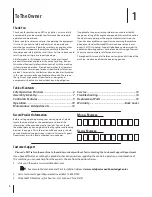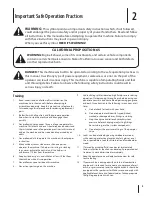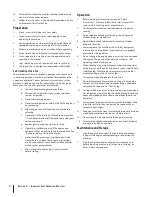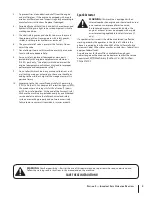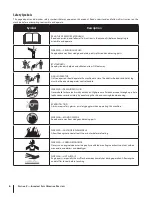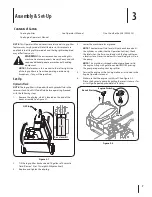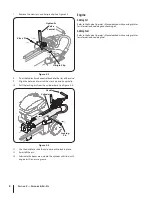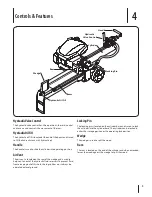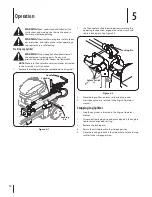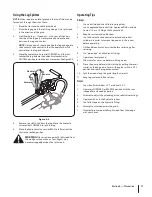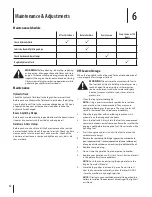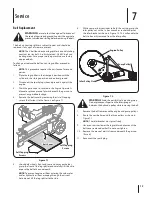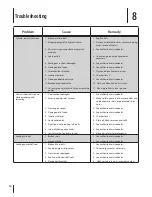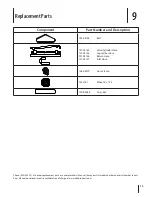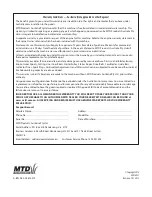
Service
7
13
Belt Replacement
WARNING!
Be sure to shut the engine off, disconnect
the spark plug wire and ground it against the engine to
prevent unintended starting before removing the belt.
The belt on your log splitter is subject to wear and should be
replaced if any signs of wear are present.
NOTE:
The V-belt found on your log splitter is a non-clutching,
constant tension belt. A substitute (non- OEM) V-belt can
be dangerous. For a proper working machine, use factory
approved belts.
To change or replace the belt on your log splitter, proceed as
follows:
NOTE:
This procedure requires the assistance of a second
person.
1.
Place the log splitter in the transport position with the
cylinder in the storage position and on level ground.
2.
Disconnect the spark plug wire and ground it against the
engine.
3.
Drain the gasoline as instructed in the Engine Operator’s
Manual or place a piece of plastic beneath the gas cap to
prevent any gasoline leakage.
4.
Remove the belt cover by removing the six self-tapping
screws that fasten it to the frame. See Figure 7-1.
Self-Tapping
Screws
Self-Tapping
Screws
Belt Cover
Figure 7-1
5.
Chock both wheels, front and rear, and have your helper
grasp the front of the log splitter and carefully tilt it back to
expose the belt drive underneath.
NOTE:
To prevent engine oil from entering the carburetor
and/or hydraulic oil from escaping through the air vent
hole, do not tilt the log splitter to the side.
6.
While your partner continues to hold the unit up, grasp the
idler pulley nut with a 9⁄16 hex wrench or socket and pivot
the idler bracket as shown in Figure 7-2. This will enable the
belt to be easily removed from the idler pulley.
Engine Pulley
Idler Pulley Nut
Pump Pulley
Figure 7-2
WARNING!
Avoid the possibility of a pinching injury.
Do not place your fingers on the idler spring or
between the belt and a pulley while removing the belt.
7.
Remove the belt from around the engine and pump pulleys.
8.
Route the new belt around the three pulleys as shown in
Figure 7-2.
NOTE:
The idler bracket must pivot freely.
9.
Have your partner lower the log splitter and remount the
belt cover removed earlier. Do not over tighten.
10. Remove the piece of plastic from underneath the gas cap
(if used).
11. Reconnect the spark plug.


